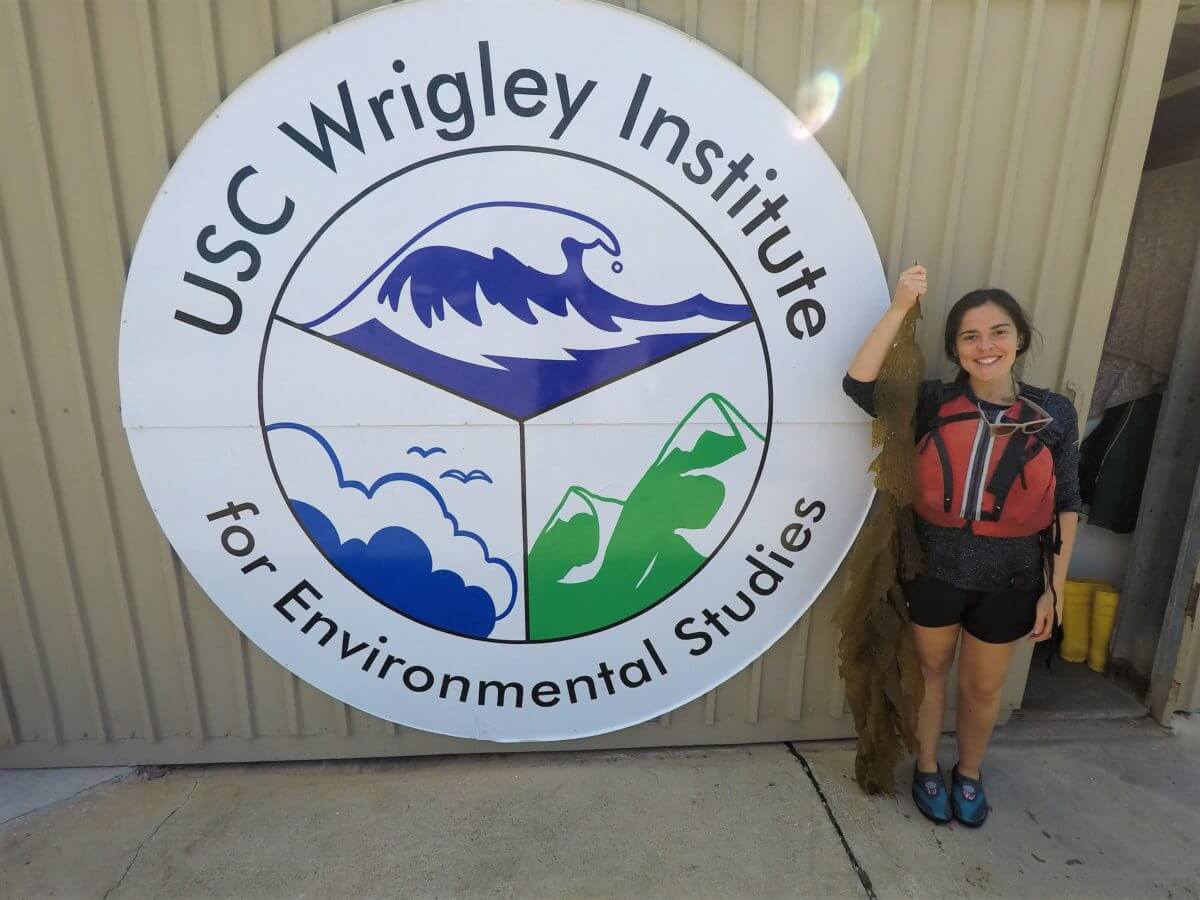Depletion of petroleum derived fuel and environmental concerns about traditional means of energy production have accelerated the use of biofuel as an alternative source in recent years. Climate change and energy security are the two major driving forces for global biofuel development.
Off the southern California coast, a team of researchers has been working on what they hope will become a clean and sustainable energy source of the future — the giant kelp, which is a type of brown macroalgae that grows naturally in the coastal waters of California and is one of the fastest-growing plants on Earth, with growth rates of approximately 2-3 feet per day. Kelps have been considered an attractive source of biofuel by the Department of Energy and private organizations since the 1970s due to its characteristics and the fact that kelp cultivation does not require land, fertilizer or freshwater resources.

During the USC Spring Break program in Catalina Island, Diane Kim explained the system for cultivating kelp in the open ocean that has been tested in waters near the Wrigley Marine Science Center campus, using moored structures nicknamed “kelp elevators”. These are autonomous moving structures to “depth-cycle” kelp up to the surface for sunlight and down to depth for essential nutrients each day. This system may make it possible to farm kelp for biofuel at large scale in the Pacific Ocean.
 Kelp forests provide habitat and sustenance for hundreds of marine species such as algae, invertebrates and fish, while sequestering carbon dioxide and producing oxygen as it grows. Many of these submarine forests also support large sport and commercial fisheries, as well as the recreational diving industry as I have experienced myself recently in Catalina Island.
Kelp forests provide habitat and sustenance for hundreds of marine species such as algae, invertebrates and fish, while sequestering carbon dioxide and producing oxygen as it grows. Many of these submarine forests also support large sport and commercial fisheries, as well as the recreational diving industry as I have experienced myself recently in Catalina Island.
The conversion technology used in the kelp-to-biofuel process is called thermochemical liquefaction. The kelp is dried out and the salt is washed away, followed by a high-temperature, high-pressure conversion process that turnes the macroalgae into bio-oil.
Kelp has been harvested for many decades in California. However, the combination of decades-old kelp biofuel ideas with today’s technology is what has really pushed large-scale open ocean kelp farming closer to reality. Maybe someday years from now, kelp forests will provide a clean and renewable source of energy (bioenergy) to compete with fossil fuels.
See you in my next post!
References
https://dornsife.usc.edu/wrigley/kelpbiofuel/
https://www.sciencedirect.com/science/article/pii/S1877705813004414
https://www.marine.usf.edu/pjocean/packets/sp02/sp02u1p4.pdf
http://www.santamonicabay.org/explore/in-the-ocean/kelp-forest-restoration/
Published on July 29th, 2018
Last updated on April 1st, 2021

